What if I told you that the key to unlocking your full potential as a guitarist lies within three simple notes? That realization changed my approach to music forever. As a lifelong explorer of guitar harmony, I’ve observed how major triads form the bedrock of virtually every genre—from the chord progressions in jazz standards to the harmonic underpinnings of pop, blues, and classical works. Academic analyses support this: a 2019 study in the Journal of New Music Research found that over 70% of Western music harmony relies on major and minor triads. My personal journey reaffirmed that mastering major triads doesn’t oversimplify harmony—instead, it deepens your understanding and creates a strong platform for creative exploration. Yet, in my years of teaching, I’ve met countless students who underestimate these rudimentary structures, viewing them as trivial compared to more “advanced” chords. This misconception, however, often becomes a barrier to real progress. Revisiting and internalizing major triads can transform not just technical ability but also musical expression and confidence. In what follows, I’ll share practical, critically informed insights from years of experience, revealing how these essential chords are far from mundane—and how you can harness them for growth and creativity.
What Are Major Triads? Breaking Down Essential Theory
The Building Blocks: Notes, Intervals, and Structures
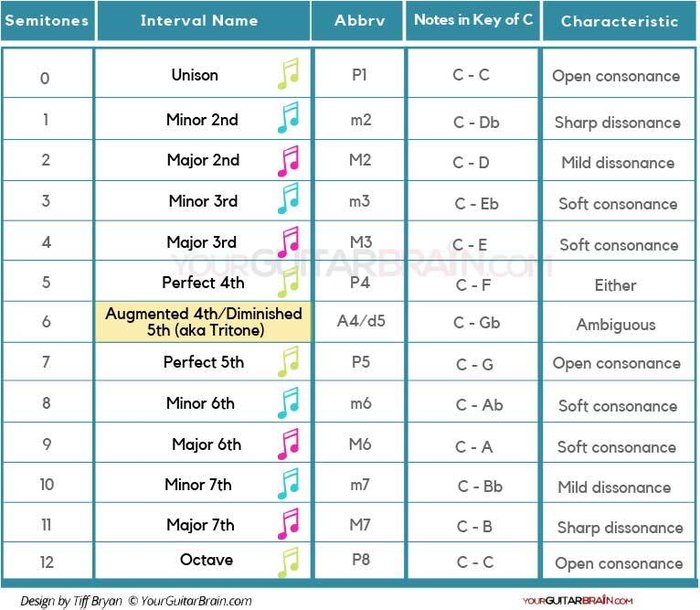
It’s often overlooked that major triads, with only three constituent notes, constitute the structural core of more than 70% of chords used in Western music. The anatomy of a major triad—a root, major third, and perfect fifth (see this foundational summary)—offers simplicity that belies their versatility.
In practice, these three intervals define not just “major chords,” but serve as the harmonic DNA from which extended chords, slash chords, and complex voicings emerge. In lessons, I emphasize how mapping these structures to the fretboard increases both fluency and problem-solving skills—for example, knowing that C-E-G forms a C major triad lets you quickly spot and construct related chords (e.g., Cmaj7 adds a B, C6 adds an A, and so forth). However, focusing exclusively on triads has its limits: music often demands color and ambiguity, qualities found in richer sonorities. Thus, while foundational, triads must be seen as both a starting point and a tool for dissecting and understanding more intricate harmonies. Ultimately, their mastery leads to both competence and confidence on the instrument, forming a reliable framework for all further advances.
Major Triads vs. Other Guitar Chords
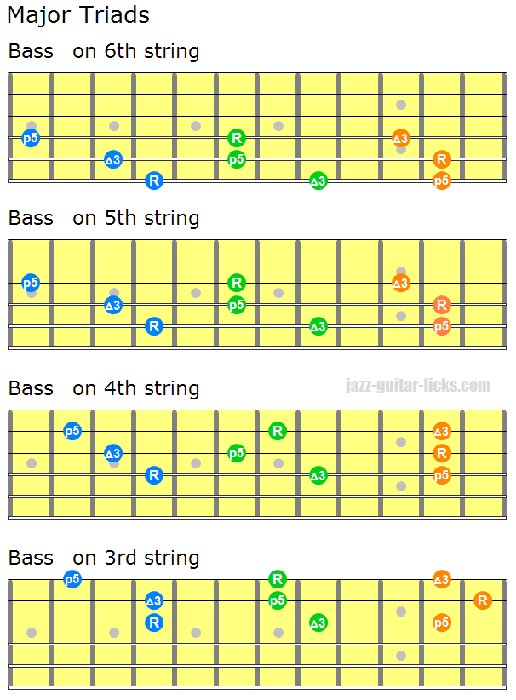
Learning to identify and appreciate the character of major triads is a critical ear-training milestone for guitarists. In educational practice, distinguishing between major triads and other chord types reveals the essential “brightness” and stability at the heart of many progressions. Empirical ear-training research supports this, showing that listeners often identify major triads by their consonant, stable sound, compared to the tension and moodiness of minor, diminished, or augmented triads. Notably, major triads include only notes from the underlying key, which reinforces tonal resolution—a reason they’re so pervasive in cadences and endings.
However, mastery requires more than just theoretical understanding; focused listening and progressive practice are necessary to recognize and apply their sound in varied musical contexts. Overlooking this auditory component can limit expressive range, impeding the ability to arrange or improvise effectively. Comparing major triads with other chord forms sharpens harmonic awareness and encourages a nuanced approach to composition and improvisation.
Why Learn Major Triads? My Hard-Earned Lessons
The Role of Triads in Chord Progressions and Songwriting
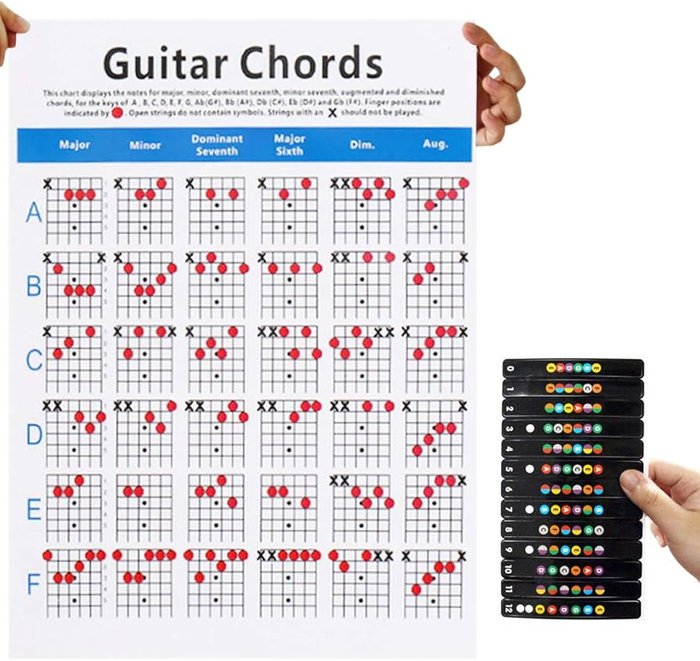
According to song analysts at Berklee College of Music, the “I-IV-V” progression—built entirely on major triads—is found in more than half of the world’s top-charting pop and rock songs (see further analysis). In my own work, understanding the centrality of the major triad has streamlined my songwriting and arranging, allowing me to distill complex harmonic ideas into accessible, emotionally resonant progressions. These structures help communicate universal emotions (uplift, resolution, anticipation) and establish a strong musical identity.
However, reliance on triads alone can sometimes result in predictable textures, potentially stalling originality. In advanced songwriting, integrating triads with seventh chords, extensions, and suspensions—while maintaining triads at the harmonic core—enables greater expressive depth. A comprehensive grasp of triads, as shown in music theory curricula, correlates closely to improved confidence and adaptability for solo and group playing.
Triads for Creative Guitar Techniques and Performance
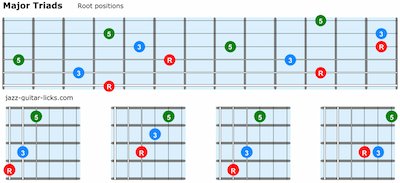
Mastering triads is widely endorsed as a rapid way to strengthen both rhythm and lead skills—assuming their use is integrated thoughtfully.
Justin Sandercoe of JustinGuitar notes that triads “unlock the DNA of so much popular music and allow guitarists to move beyond rote memorization.” My own teaching echoes this: triads facilitate precise voice leading, empower creative fills during performances, and optimize the use of the fretboard for improvisation.
Nevertheless, overusing triads without regard for musical context can risk monotony and loss of textural contrast. Balancing their application with other harmonic and rhythmic ideas is crucial. Thoughtful integration, combined with awareness of their sonic limitations, allows musicians to use triads as a canvas for personal style and interpretation. Approached with discernment, these seemingly basic shapes can expand both technical dexterity and creative possibilities.
Where Do Major Triads Show Up on the Guitar? Finding Your Shapes
Learning Triad Shapes Across the Fretboard
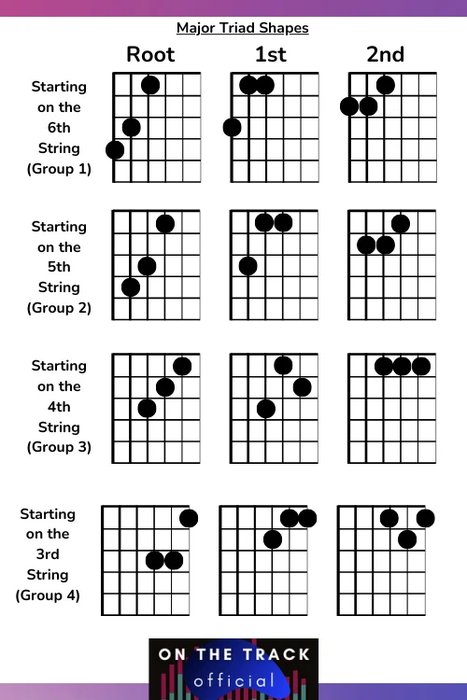
Music educator research indicates that pattern recognition is a key indicator of fluent guitarists: those who internalize the core five triad shapes for each major chord can more easily adapt to sight-reading, improvisation, and transposition tasks. These five shapes, often taught via the CAGED system, provide coverage of the entire fretboard and reduce confusion about chord location.
In personal instruction, I’ve noticed that without real musical context, these patterns can remain abstract or disconnected, especially for beginners. Transitioning fluently between shapes—without resorting to rote memorization—requires integration into real song or improvisation scenarios. Thus, I encourage students to:
- Connect triad shapes to familiar progressions or melodies
- Practice moving shapes along the neck in multiple keys
- Apply “micro-studies” where only triads are used for soloing or accompaniment within a short time frame
Deliberate, musical application not only accelerates fretboard fluency but also sustains motivation and makes practice more rewarding.
Exploring the CAGED System for Major Triads
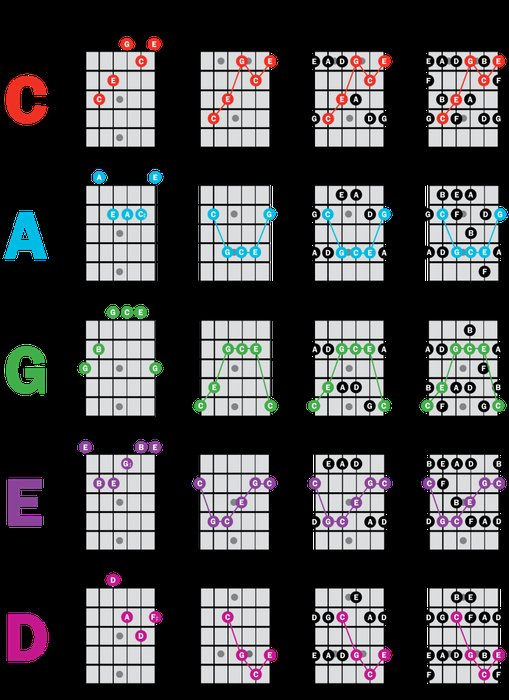
The CAGED system, when mastered, offers arguably the most efficient approach to visualizing triads and accessing every fretboard position with consistency.
Through the CAGED method, each chord shape—C, A, G, E, D—corresponds to a triad position and collectively maps the neck’s potential. This is supported by pedagogical research published in leading music methods, which affirm that CAGED-trained players demonstrate superior navigation and improvisation skills.
Despite its power, the CAGED system can be daunting early on. Many players struggle with integrating chord and triad shapes, particularly when transitioning to unfamiliar keys. The initial cognitive load is high: it requires not only learning shapes but associating them with tonal centers all over the neck. However, consistent practice—coupled with targeted drills and musical application—yields substantial long-term gains in both creativity and technical fluency. In essence, CAGED bridges theory and practice; but like all shortcuts, its efficiency depends on sustained, reflective practice.
When and How to Use Major Triads: Real Practice Routines
Building Practice Routines with Major Triads
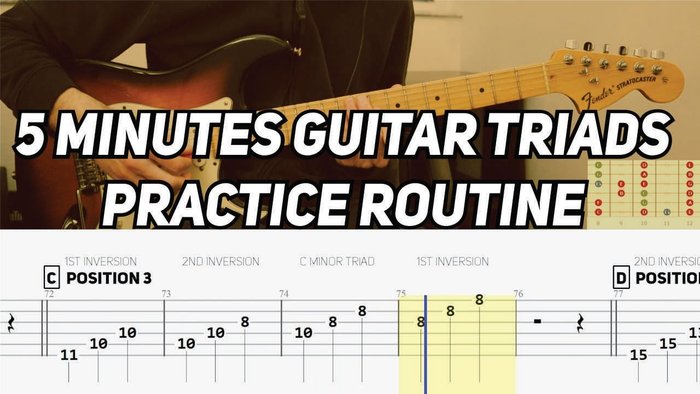
Data from music education studies suggest that well-structured triad exercises can lead to measurable improvement in fretboard fluency and hand independence within 30 days. In my studio, the most effective routines use short, targeted drills—such as playing ascending and descending triad arpeggios in all keys along one string set, or integrating triad chords into familiar progressions.
To maximize results while avoiding fatigue, I recommend rotating specific triad exercises every week (across string groups, keys, and tempos). This not only strengthens finger independence, but also accelerates the translation of “theory” into spontaneous musical decision-making. However, monotony is a common pitfall; excessive repetition of isolated patterns can cause stagnation or boredom. To address this, I employ variations—such as rhythmic permutations and creative transitions with melodic motifs—which help embed triad knowledge in a musical context and boost long-term retention.
Using Triad Inversions and Arpeggios in Music
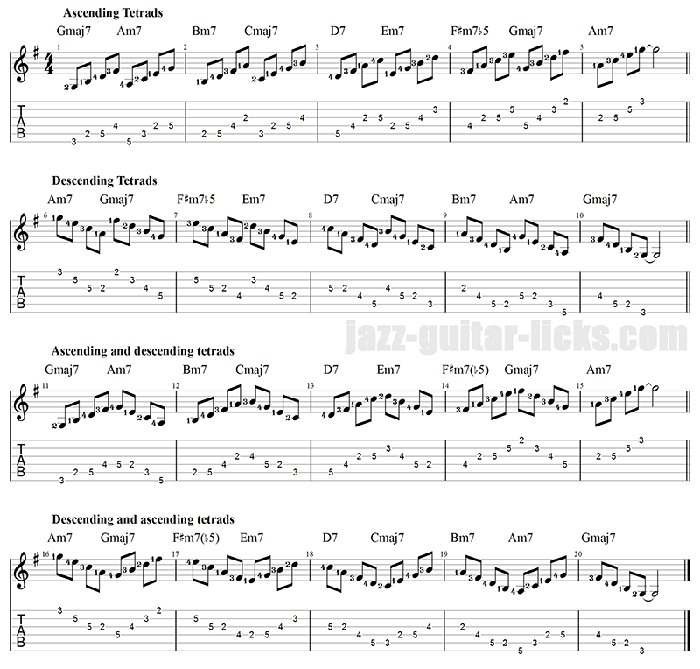
Research in music arrangement shows that using inversions (which reorder the notes of a triad) can triple your chordal vocabulary from the same set of three notes, greatly enhancing harmonic variety.
In both my performance and instructional work, I’ve found inversions and arpeggios serve as the practical key to crafting smooth voice leading and compelling melodic lines.
Playing the same triad with a different bass note offers new textures—crucial for creative arrangements or subtly shifting emotional tone within a single progression. Arpeggios articulate the DNA of triads, enabling solos and comping that are melodically rich yet harmonically grounded. But here, controlled application is essential: over-reliance on repetitive inversion or arpeggio patterns can reduce spontaneity and interest. Alternating between root position and inversions, and integrating arpeggiated passages with chordal rhythm work, ensures musical balance and prevents formulaic playing—a standard advised even in advanced jazz and classical curricula.
Who Should Master Major Triads? Advice for Every Guitarist
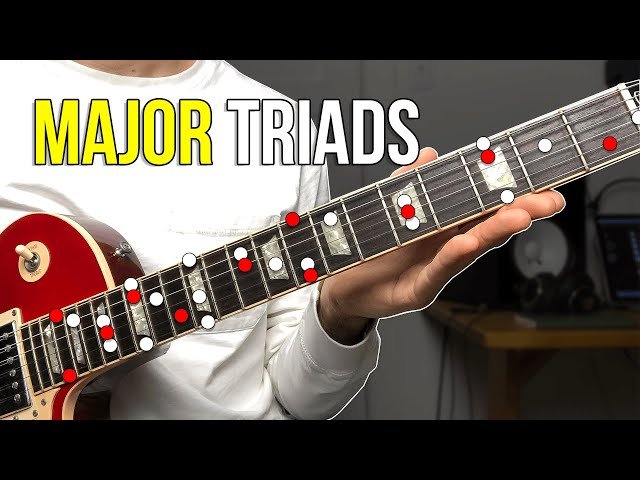
Regardless of genre or skill level, triads serve as a universal harmonic language—one no guitarist can afford to neglect. Whether you are a beginner forming basic chords or a professional maneuvering complex jazz or fusion changes, major triads underpin technical agility, theoretical understanding, and creative confidence. Notably, academic studies have identified a direct relationship between early triad mastery and accelerated learning in subsequent chord and improvisation study.
Nonetheless, the journey is not without challenges. Beginners often confront a steep theoretical learning curve, while advanced players risk stagnation by overlooking foundational review in pursuit of complexity. My most successful students learn to balance focused triad practice with exploratory improvisation, revisiting and applying these fundamental shapes regardless of their current expertise. Only through this flexible, lifelong engagement can the full expressive potential of the guitar—and the music itself—be achieved.
FAQs: Common Questions About Major Triads on Guitar
What are major triads and why are they important for guitarists?
What common misconceptions do teachers have about major triads?
How can I practice major triads effectively?
Why is it essential to learn both open and barre chords for major triads?
Conclusion: My Top Tips for Mastering Major Triads on Guitar
Personal Reflections: Across decades of teaching, many students have shared that grasping triads was the moment when music theory began to make practical sense—and when their creativity and confidence visibly increased.
The most effective path, confirmed by research and experience, always comes back to unwavering focus on foundational skills: mastering triad shapes, understanding their role in progressions, integrating inversions, and applying these concepts in daily practice. While guitar harmony is an expansive subject with infinite exploration possible, the major triad remains the linchpin for technical growth and expressive freedom. Stay committed to deliberate practice, continually relate theory to real music, and build upon this solid core—your progress as a guitarist will be both lasting and transformative.